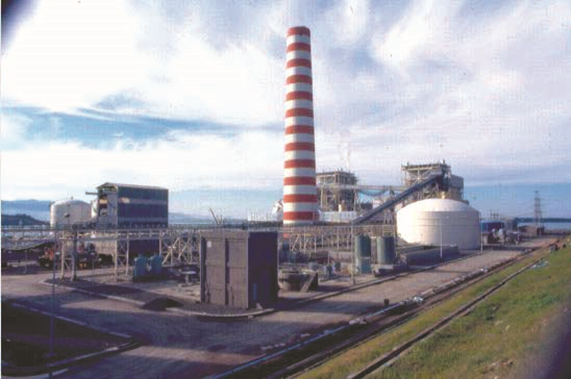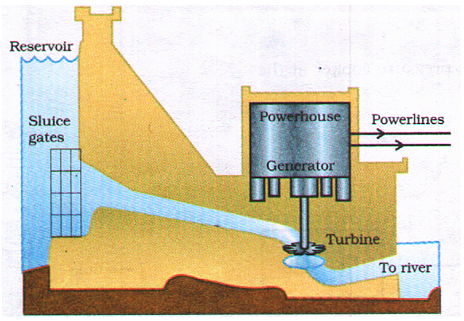FOSSIL FUELS
Fossil fuels are formed from the remains of dead plants and animals which got buried deep inside the Earth millions of years ago, due to some natural processes.
Coal, petroleum and natural gas are fossil fuels which meet maximum of our energy demands.
However in ancient times, wood was the most common source of heat energy. The growing demand for energy was largely met by the fossil fuels – coal and petroleum.
These fossil fuels are non-renewable and we need to conserve them.
Types of Fossil Fuels
The various types of fossil fuels are:
- Coal
It is the most abundant fossil fuel on the Earth which is essentially carbon. It is used as a combustion fuel. The exploitation of coal as a source of energy made the industrial revolution possible. Increasing industrialization has led to a better quality of life all over the world. Coal is the principal source of heat for electricity generation and is used as a reducing agent (coke) in heavy industries like iron and steel.
Lignite (28% - 30% carbon) and Bituminous (78%-87% carbon) burn faster and release a great deal of pollutants in the atmosphere on account of their lower carbon content. Anthracite, with highest carbon content burns slowly, releases much less smoke, delivers more energy and is the best quality coal.
- Petroleum
Petroleum (also called crude oil) is a thick black liquid and is not used as fuel in its natural form. It is refined by the process of fractional distillation to obtain a number of useful components like fuel oil, kerosene, diesel oil, petrol or gasoline and petroleum gas. On liquefaction, petroleum gas changes into a liquid which is called liquefied petroleum gas (LPG). It is used for cooking.
Natural gas is also a fossil fuel usually found underground near an oil source. It is the cleanest burning fossil fuel as its gives off less carbon dioxide than coal and oil on burning. It is used as CNG (Compressed Natural Gas).
Also Check: Baking Soda | Epsom salt | Glucose | Amino Acids
Related Links: Periodic Table Element | Metal | Electogravity
Efficiency and use of Fossil Fuels
The pollution caused by burning fossil fuels can be reduced by increasing the efficiency of the combustion process and using various techniques to reduce the escape of harmful gases and ashes into the surroundings. Besides being used directly for various combustion process, fossil fuels are the major fuels used for generating electricity, a form of energy which has become a necessity in today’s scenario.
THERMAL POWER PLANT
A “thermal” power plant as the name suggests generates electric power from large amount of heat produced by burning fossil fuels, i.e., coal and petroleum. Fossil fuels are burnt in large amounts in power stations to heat up water to produce steam which further runs the turbine to generate electricity. Transmission of electricity is more efficient than transporting coal or petroleum over the same distance. Therefore, many thermal power plants are set up near coal or oil fields.

Thermal Power Plant
HYDRO (HYDEL) ENERGY
Solar energy appears in the form of energy of water flowing in the rivers which is obvious from the water cycle in nature.
Hydro electric power plant
Hydro electricity is the electricity produced from the kinetic energy of flowing water and a plant which generates hydroelectricity on a large scale is called hydro electric power plant.
A quarter of our energy requirement in India is met by hydropower plants. Since there are very few water falls which could be used as a source of potential energy, hydro power plants are mostly associated with dams.

A schematic view of a hydro electric power plant
Steps for generation of hydro electricity
The various steps for generation of hydro electricity are :
- Water is collected in storage dams (high rise structure) where kinetic energy of flowing water is transformed into its potential energy.
- Water from the dam is allowed to fall through pipelines over the blades of a turbine at the bottom of the dam. The potential energy of water changes into its kinetic energy which is transferred to the turbine.
- Moving turbine changes the kinetic energy of water into electricity.
Advantages of hydropower plants over thermal power and other plants
- Hydro electric power is the cheapest and renewable source of energy. Since the water in the reservoir would be refilled each time it rains, we would not have to worry about hydroelectricity sources getting used up the way fossil fuels would get finished one day.
- It has low maintenance cost, more reliability and high efficiency.
- It is pollution free.
Demerits of hydro power plants
The various demerits of hydro power plants are:
- The initial investment is very high.
- Construction of big dams has certain problems associated with it. The dams can be constructed only in a limited number of places, preferably in hilly terrains.
- Large areas of agricultural land and human habitation are to be sacrificed as they get submerged.
- Large eco-systems are destroyed when submerged under the water in dams. The vegetation which is submerged rots under anaerobic conditions and gives rise to large amounts of methane which is also green house gas.
- It creates the problem of unsatisfactory rehabilitation of displaced people.
Frequently Asked Questions
Fossil fuels are energy sources formed from the remains of ancient plants and animals.
The four main types are coal, oil, natural gas, and peat.
It's called fossil fuel because it's made from the fossils of ancient plants and animals.
They provide energy for electricity, transportation, and heating.